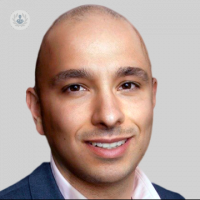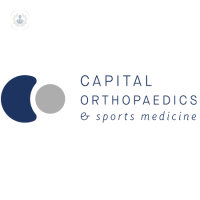The knee joins the thigh to the lower part of the leg, connected by two joints. One is the tibiofemoral joint, between the femur and tibia, while the other is the paletellofemoral joint, between the femur and patella. The knee is the largest of the joints in the human body, but it is also one of the most easily injured.
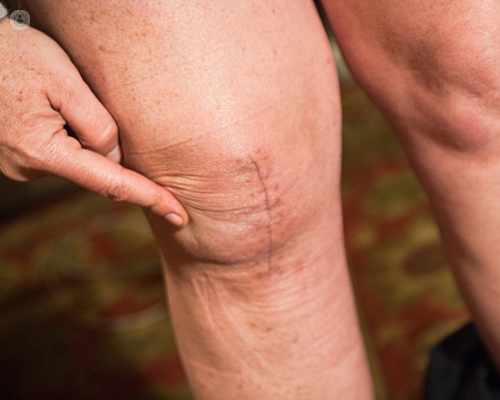
What is the knee made up of?
The knee is made up of bone, ligaments, tendons, and ligaments. They work together to allow the knee to move smoothly and support the body. The knee joint is complex, and therefore it can be injured in a manner of different ways.
Common knee injuries
Some of the more common knee injuries include:
- Fractures
- Ligament injuries (such as anterior or posterior cruciate ligament injuries)
- Tears in tendons or meniscus
- Dislocation
Symptoms of a knee injury
The knee can be injured in many ways, but some of the most common symptoms include pain, especially while walking or moving, a feeling of instability, and swelling in the knee or around it. If you are in severe pain, cannot move your knee, have significant swelling, or cannot walk without limping, you should seek immediate medical attention.
Treatment of knee injuries
Treatment of knee injuries depends on the type of injury and the part of the knee affected. Some knee injuries can be treated through methods like physiotherapy or medication. Some can be treated simply by immobilisation – meaning you cannot move your knee. Usually in these cases a cast or brace will be fitted to ensure protection and help it to heal.
In some cases, surgery may be the best course of treatment. Most surgical procedures these days are minimally invasive, using very small instruments and making minimal incisions, which usually allows for a faster healing process. In some cases, some injuries may need to be treated with open surgery which requires a larger incision.
11-13-2017 11-13-2017Knee
Mr Raghbir Khakha - Orthopaedic surgery
Created on: 11-13-2017
The knee joins the thigh to the lower part of the leg, connected by two joints. One is the tibiofemoral joint, between the femur and tibia, while the other is the paletellofemoral joint, between the femur and patella. The knee is the largest of the joints in the human body, but it is also one of the most easily injured.

What is the knee made up of?
The knee is made up of bone, ligaments, tendons, and ligaments. They work together to allow the knee to move smoothly and support the body. The knee joint is complex, and therefore it can be injured in a manner of different ways.
Common knee injuries
Some of the more common knee injuries include:
- Fractures
- Ligament injuries (such as anterior or posterior cruciate ligament injuries)
- Tears in tendons or meniscus
- Dislocation
Symptoms of a knee injury
The knee can be injured in many ways, but some of the most common symptoms include pain, especially while walking or moving, a feeling of instability, and swelling in the knee or around it. If you are in severe pain, cannot move your knee, have significant swelling, or cannot walk without limping, you should seek immediate medical attention.
Treatment of knee injuries
Treatment of knee injuries depends on the type of injury and the part of the knee affected. Some knee injuries can be treated through methods like physiotherapy or medication. Some can be treated simply by immobilisation – meaning you cannot move your knee. Usually in these cases a cast or brace will be fitted to ensure protection and help it to heal.
In some cases, surgery may be the best course of treatment. Most surgical procedures these days are minimally invasive, using very small instruments and making minimal incisions, which usually allows for a faster healing process. In some cases, some injuries may need to be treated with open surgery which requires a larger incision.
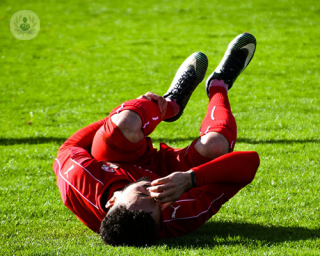

ACL injuries: everything you need to know
By Mr Arjuna Imbuldeniya
2024-12-14
Tears and sprains to the anterior cruciate ligament have been the bane of many an athlete’s career. We have often heard of footballers and the like having these injuries in the newspaper, but what is this ligament is or how you can deal with an injury to it? Top orthopaedic surgeon Mr Arjuna Imbuldeniya is here with a handy guide to this common sports injury. See more
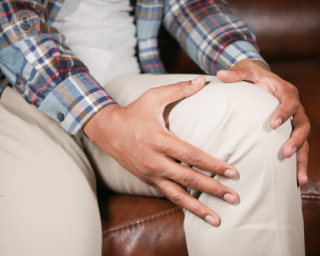

ACL reconstruction/sports injuries and joint preservation strategies for patients with knee issues
By Mr James Singleton
2024-12-14
Knee injuries, particularly those affecting the anterior cruciate ligament (ACL), are common among athletes and active individuals. ACL reconstruction and various joint preservation strategies play a crucial role in managing these injuries and ensuring long-term knee health. This article by leading orthopaedic knee specialist Mr James Singleton provides a comprehensive overview of ACL reconstruction and joint preservation strategies for patients with knee issues. See more


A comprehensive overview of knee injuries sustained in football
By Mr Paul Sutton
2024-12-14
Football is an extremely popular sport, played by millions across the world. However, unfortunately it is easy to sustain injuries while playing football. Highly respected consultant orthopaedic surgeon Mr Paul Sutton explains the most common knee injuries, prevention and when these injuries require surgery. See more
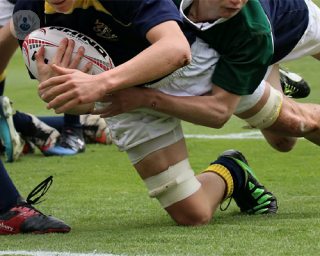

Taking care in the Olympics: rugby and sporting knee injuries II
By Mr Andrew Edwards
2024-12-14
Following his first article describing the types of knee injuries that may occur in rugby 7s and other high-impact professional sports, consultant orthopaedic and traumatology surgeon Mr Andrew Edwards continues in this next part to tell us the course of treatment for knee injuries that happen in sports. See more
Experts in Knee
-
Mr Andrew Davies
Orthopaedic surgeryExpert in:
- Sports injuries
- Knee
- Knee replacement
- Ligamentoplasty
- Knee arthroscopy
- Anterior cruciate ligament
-
Mr Neil Jain
Orthopaedic surgeryExpert in:
- Knee
- Shoulder
- Sports injuries
- Tendon injuries
- Joint preservation surgery
- Sports surgery
-
Mr Raghbir Khakha
Orthopaedic surgeryExpert in:
- Sports injuries
- Joint preservation surgery
- Joint replacement
- Knee
- Paediatric orthopaedics
- Osteotomy
-
Mr Chukwuemeka Nnene
Orthopaedic surgeryExpert in:
- Hip replacement
- Foot and ankle
- Knee replacement
- Knee
- Knee arthroscopy
- Arthroplasty
-
Mr Yousufuddin Shaik
Orthopaedic surgeryExpert in:
- Achilles tendon
- Bunion (hallux valgus)
- Joint pain
- Knee
- Stem cells
- Foot and ankle
- See all

London Bridge Hospital - part of HCA Healthcare
London Bridge Hospital - part of HCA Healthcare
27 Tooley St
No existe teléfono en el centro.
By using the telephone number provided by TOP DOCTORS, you automatically agree to let us use your phone number for statistical and commercial purposes. For further information, read our Privacy Policy
Top Doctors

HCA UK at The Shard
HCA UK at The Shard
32 St Thomas Street, SE1 9BS
No existe teléfono en el centro.
By using the telephone number provided by TOP DOCTORS, you automatically agree to let us use your phone number for statistical and commercial purposes. For further information, read our Privacy Policy
Top Doctors

Capital Orthopaedics & Sports Medicine
Capital Orthopaedics & Sports Medicine
164 Cromwell Rd
No existe teléfono en el centro.
By using the telephone number provided by TOP DOCTORS, you automatically agree to let us use your phone number for statistical and commercial purposes. For further information, read our Privacy Policy
Top Doctors
-
London Bridge Hospital - part of HCA Healthcare
27 Tooley St, Central LondonExpert in:
- 24-hour service
- Cardiology
- Minimal access surgery (keyhole surgery)
- Orthopaedic surgery
- Cardiovascular disease
- Gastroenterology
-
HCA UK at The Shard
32 St Thomas Street, SE1 9BS, Central LondonExpert in:
- Vascular Surgery
- Head and neck cancer
- Breast Cancer
- Orthopaedic surgery
- Thoracic Surgery
- Cancer screening clinic
-
Capital Orthopaedics & Sports Medicine
164 Cromwell Rd, West LondonExpert in:
- Minimal access surgery (keyhole surgery)
- Orthopaedic surgery
- Robotic Surgery
- Shoulder and elbow
- Foot and ankle
- Knee
- Most viewed diseases, medical tests, and treatments
- Ulnar nerve entrapment
- Peripheral nerve block
- Peripheral neuropathy
- Joint pain
- Lumbar herniated disc
- Spinal surgery
- Minimal access surgery (keyhole surgery)
- Shoulder pain
- Osteoporosis
- Botulinum toxin (Botox™)


